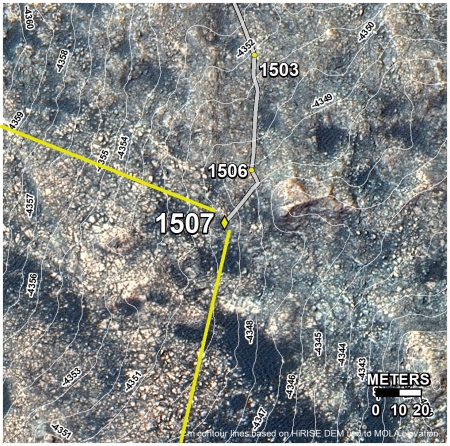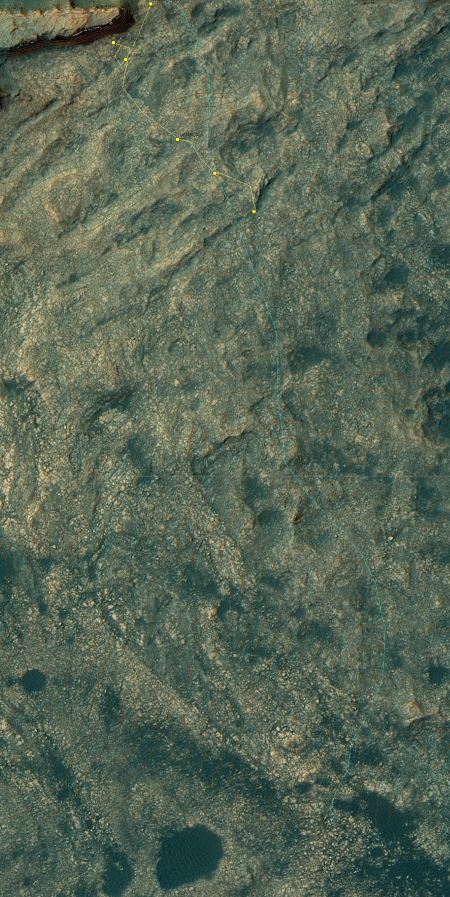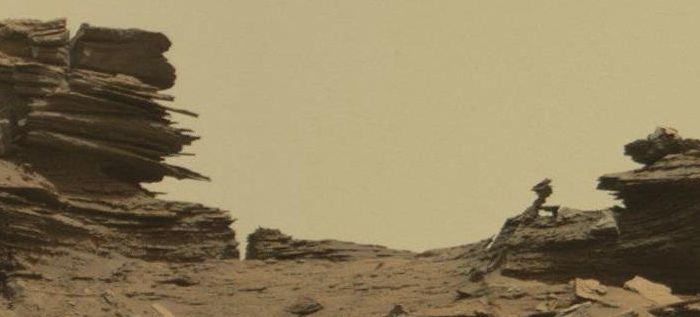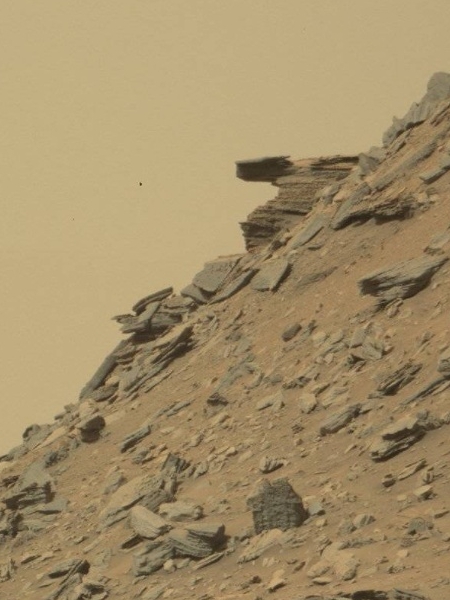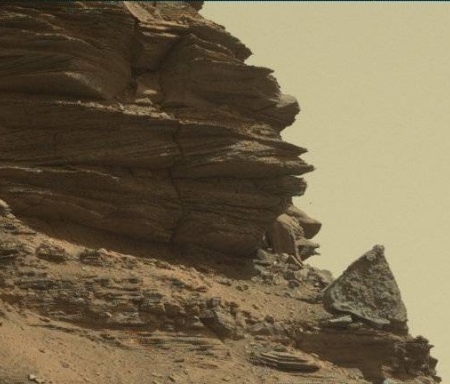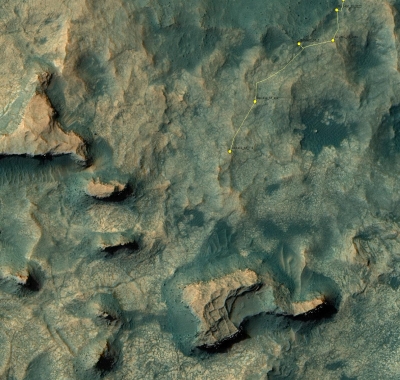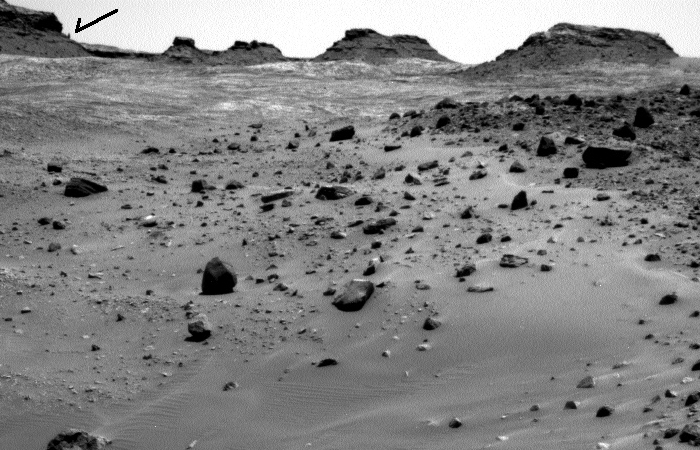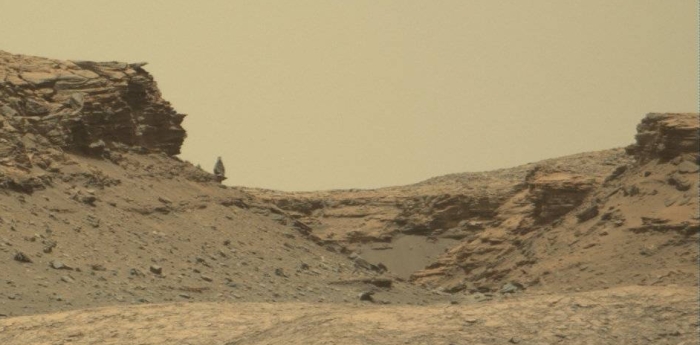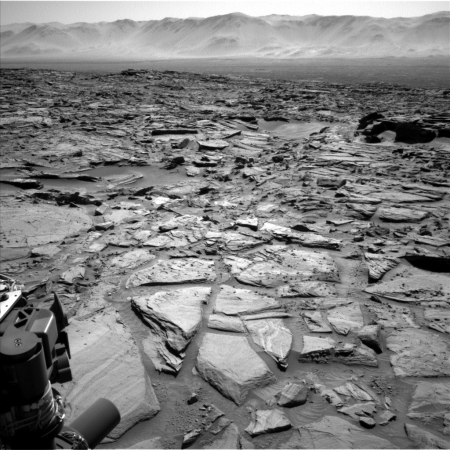Drill issues at Curiosity
The recent failure by Curiosity to drill has caused engineers to stop the rover in its tracks while they analyze the cause of the problem.
The rover team learned Dec. 1 that Curiosity did not complete the commands for drilling. The rover detected a fault in an early step in which the “drill feed” mechanism did not extend the drill to touch the rock target with the bit. “We are in the process of defining a set of diagnostic tests to carefully assess the drill feed mechanism. We are using our test rover here on Earth to try out these tests before we run them on Mars,” Curiosity Deputy Project Manager Steven Lee, at NASA’s Jet Propulsion Laboratory in Pasadena, California, said Monday. “To be cautious, until we run the tests on Curiosity, we want to restrict any dynamic changes that could affect the diagnosis. That means not moving the arm and not driving, which could shake it.”
Two among the set of possible causes being assessed are that a brake on the drill feed mechanism did not disengage fully or that an electronic encoder for the mechanism’s motor did not function as expected. Lee said that workarounds may exist for both of those scenarios, but the first step is to identify why the motor did not operate properly last week.
Though they do not say so, the problem is almost certainly related to a fundamental design flaw in the drill’s design that causes intermittent short-circuits when they use it, and has the possibility of shorting out the entire rover if they are not careful.
The recent failure by Curiosity to drill has caused engineers to stop the rover in its tracks while they analyze the cause of the problem.
The rover team learned Dec. 1 that Curiosity did not complete the commands for drilling. The rover detected a fault in an early step in which the “drill feed” mechanism did not extend the drill to touch the rock target with the bit. “We are in the process of defining a set of diagnostic tests to carefully assess the drill feed mechanism. We are using our test rover here on Earth to try out these tests before we run them on Mars,” Curiosity Deputy Project Manager Steven Lee, at NASA’s Jet Propulsion Laboratory in Pasadena, California, said Monday. “To be cautious, until we run the tests on Curiosity, we want to restrict any dynamic changes that could affect the diagnosis. That means not moving the arm and not driving, which could shake it.”
Two among the set of possible causes being assessed are that a brake on the drill feed mechanism did not disengage fully or that an electronic encoder for the mechanism’s motor did not function as expected. Lee said that workarounds may exist for both of those scenarios, but the first step is to identify why the motor did not operate properly last week.
Though they do not say so, the problem is almost certainly related to a fundamental design flaw in the drill’s design that causes intermittent short-circuits when they use it, and has the possibility of shorting out the entire rover if they are not careful.


